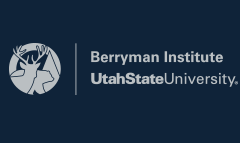Creative Commons License

This work is licensed under a Creative Commons Attribution 4.0 License.
Abstract
The use of unmanned aerial vehicles (UAVs) for agricultural and environmental research has increased markedly in recent years, and a key application has been to conduct damage assessments. Invasive wild pigs (Sus scrofa) cause both agricultural and environmental damage, and past studies have utilized UAVs to quantify this damage. Each methodology has advantages, but they also have drawbacks such as high rates of damage omission or reliance upon a near-infrared camera, which may be prohibitively expensive for some land managers and scientists. Our objective was to develop a methodology that could be easily implemented to conduct wild pig damage assessments using a widely available UAV and stock camera that records standard wavelengths in the visible spectrum. We evaluated the ability of UAV-derived orthomosaic imagery in conjunction with Maximum Likelihood Classification and visual verification to quantify the amount of wild pig damage across a Florida, USA, rangeland that included improved grassland systems, semi-native grasslands, and emergent seasonal wetlands. The primary goal of this study was to assess and combine tools that could be used to conduct high-accuracy assessments of wild pig damage across a spatial scale that would be infeasible using traditional ground-based methods. This approach allowed us to accurately quantify wild pig damage across a large area in this agroecosystem by eliminating on average 95.5% and 89.7% of the survey area in pastures and wetlands, respectively, prior to review while retaining >99% of visible rooting. We recorded more rooting damage in both pastures and wetlands during the first 2 of the 4 flights with greater damage compared to the fourth flight for improved pastures and wetlands. We have demonstrated that this is a highly accurate and straightforward technique compared with other efforts to quantify wild pig damage with UAVs. We recommend other scientists and land managers use this technique for assessments of wild pig damage because of its advantages and ease of implementation.
Recommended Citation
Anderson, Wesley M.; Wight, Bethany; and Boughton, Raoul K.
(2024)
"Quantifying Wild Pig Disturbance in Pastures and Wetlands Using Unmanned Aerial Vehicle-Derived Imagery,"
Human–Wildlife Interactions: Vol. 18:
Iss.
1, Article 9.
DOI: https://doi.org/10.26077/783d-15cb
Available at:
https://digitalcommons.usu.edu/hwi/vol18/iss1/9



